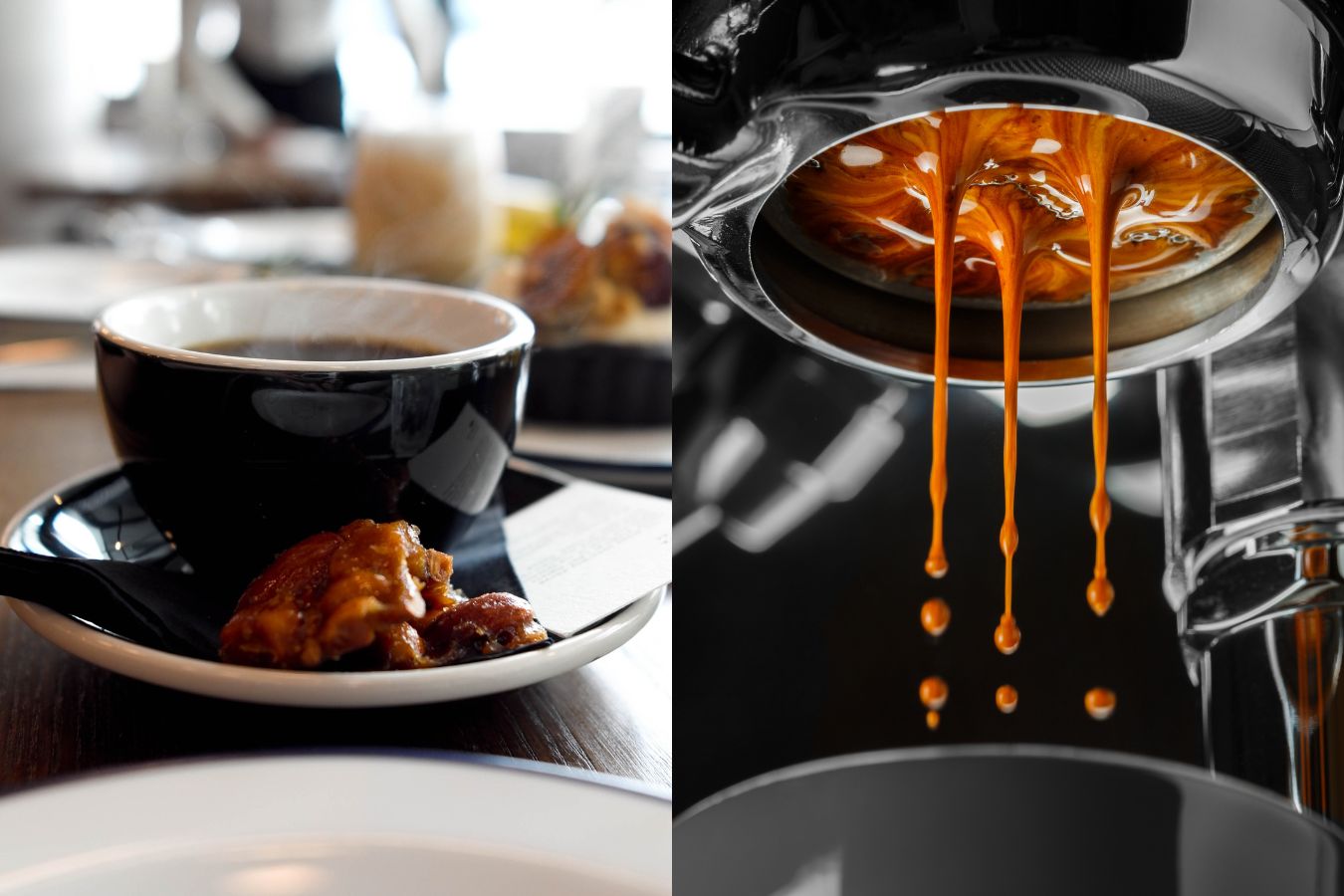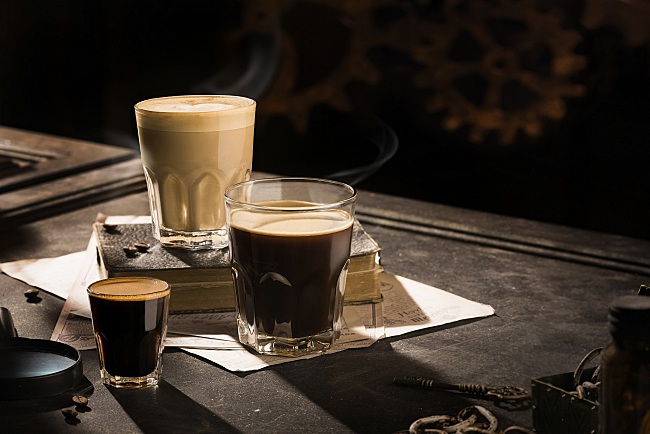Savor the Distinctiveness with Just-Roasted SOE Single Origin Espresso
Savor the Distinctiveness with Just-Roasted SOE Single Origin Espresso
Blog Article
Recognizing Coffee Beans: the Trip From Coffee to Blended Coffee Beans

The Origins of Coffee: A Global Point Of View
While you may consider coffee as a modern-day staple, its beginnings trace back centuries, linking with societies throughout the globe. The tale begins in Ethiopia, where tale says a goat herdsman named Kaldi found the energizing impacts of coffee beans after discovering his goats romping energetically after consuming them. This triggered rate of interest, leading to coffee's infect Arab investors who treasured the brewed drink. By the 15th century, it got to Persia, Egypt, and Turkey, where coffeehouses became social centers for conversation and society.
As trade routes broadened, coffee made its means to Europe in the 17th century, rapidly getting appeal. It changed from a magical drink into an everyday routine, intellectual exchanges and inspiring events. Each society included its one-of-a-kind spin to coffee preparation, enriching its history. This worldwide journey highlights exactly how coffee links us, going beyond boundaries and joining varied practices via an easy bean.
Farming and Harvesting of Coffee Beans
As coffee's trip advanced, the emphasis moved to the growing and harvesting of certain bean ranges, especially those utilized for espresso. You'll find that coffee beans frequently come from Arabica or Robusta plants, each offering distinct flavors. The perfect growing conditions consist of high elevations and abundant, well-drained soil, which enhance the beans' quality.
During the harvest, selecting techniques vary. Timing is crucial; you want to harvest when the cherries get to peak ripeness for maximum taste.
As soon as harvested, the beans are planned for processing, which is important in determining their last taste. Recognizing the growing and harvesting procedures gives you understanding into what goes right into your preferred coffee, enriching your admiration for every cup.
Handling Methods: From Cherry to Bean
Since you've discovered gathering espresso beans, let's discover how those cherries change right into the coffee beans you like. You'll see just how different harvesting strategies impact taste, adhered to by the necessary steps of fermentation and drying. We'll break down the milling and grading procedure that determines your coffee's high quality.
Collecting Methods Clarified
When it comes to coffee, recognizing harvesting strategies is important, considering that they straight influence the flavor and high quality of the beans you appreciate. Discerning choosing includes hand-picking only ripe cherries, ensuring you get the best quality beans. Ultimately, the selection of collecting strategy can substantially affect your coffee experience, so it's worth recognizing just how those beans made it to your mug.
Fermentation and Drying Out
After collecting, the following action in handling coffee beans play a substantial role fit their flavor. You'll discover that fermentation is crucial, as it aids damage down the mucilage surrounding the beans, enhancing their taste profile. Depending on the technique, this procedure can last from a couple of hours to a number of days, with varying results based on temperature level and moisture.
When fermentation is total, drying out adheres to, which is equally important. You can pick from sun-drying or mechanical drying approaches. Sun-drying enables the beans to take in flavors from the setting, while mechanical drying out assurances regular wetness levels no matter of weather condition. Proper drying is necessary to prevent mold and mildew and preserve the beans' top quality, ultimately affecting your cup of coffee.
Milling and Grading Process
As fermentation and drying out established the phase for taste growth, the milling and grading procedure warranties that only the finest coffee beans make it to your mug. This stage includes getting rid of the outer layers of the coffee cherry, consisting of the parchment and husk. After milling, the beans are arranged by size and weight, making sure a consistent quality. You'll discover that grading aids identify flaws and classify beans, which affects flavor and fragrance. Top notch beans receive a higher grade, leading to a richer coffee experience. As soon as graded, the beans are prepared for product packaging and shipping, protecting their unique attributes. This meticulous process is essential for delivering the remarkable preference you appreciate in every sip of your favored brew.
Roasting Techniques: Unlocking Flavor Potential
When you roast coffee beans, the method you choose can substantially influence the taste account. Recognizing the partnership in between time, temperature level, and roasting methods is essential to revealing the potential of your mixture. Allow's check out exactly how these aspects collaborated to produce the best mug.
Toasting Methods Discussed
While you could assume that all coffee toasting techniques yield the very same outcomes, the reality is that each technique reveals one-of-a-kind taste capacities in the beans. You can pick between approaches like drum toasting, air roasting, or perhaps conventional pan roasting. Drum toasting utilizes a turning drum to evenly disperse warm, enhancing caramelization and generating a balanced taste. Air roasting, on the various other hand, circulates warm air around the beans, advertising a lighter roast with pronounced level of acidity. Pan toasting permits hands-on control however calls for continuous focus to prevent burning. Each method has its nuances, so trying out various techniques can aid you uncover the excellent roast that lines up with your preference preferences. Delight in the trip of discovering your perfect mug!

Impact on Flavor Account
Different roasting approaches not only influence the procedure yet also significantly influence the flavor profile of the coffee beans. When you pick a light roast, you'll experience brilliant acidity and flower notes, showcasing the bean's beginning. On the other hand, a medium roast equilibriums level of acidity with sweet taste, typically revealing chocolatey undertones. Dark roasts, on the other hand, draw out vibrant, smoky tastes, often covering up the bean's unique qualities. Each method discloses various oils and substances, leading to a wide variety of tastes. By try out various roasting styles, you can discover which profiles resonate with your taste buds. Recognizing these subtleties helps you appreciate the creativity behind your mug of coffee, boosting your overall experience with every sip.
Time and Temperature Elements
To release the complete taste possibility of coffee beans, both time and temperature level throughout the toasting process play considerable roles. When roasting, you'll locate that greater temperature levels can swiftly establish flavors, however if you rush it, you could end up with burnt notes. Alternatively, reduced temperature levels permit a more steady taste development, showcasing the beans' unique features.

Timing is equally as this post vital; prolonging the roast too long can bring about a loss of level of acidity and brightness, while as well short a roast could leave the beans underdeveloped. Locating that pleasant area needs method and testing. By readjusting these aspects, you can reveal the abundant, complex tastes concealed within each bean, producing a really exceptional coffee experience.
The Art of Mixing: Crafting Special Coffee Profiles

Start by picking a base coffee that supplies a solid structure. Then, pick corresponding beans to boost certain taste notes. For instance, a brilliant Ethiopian bean can bring fruitiness, while a rich Brazilian coffee adds body. Experimentation is essential-- don't hesitate to readjust proportions up until you locate your ideal profile.
As you blend, keep in mind that each combination narrates. You're not just making coffee; you're creating an experience. So, take your time, taste frequently, and take pleasure in the trip of finding your trademark blend.
Brewing Techniques: Exactly How Preparation Affects Flavor
Mixing coffee opens a domain name of flavor possibilities, yet just how you make that blend can considerably influence your last mug. Different brewing approaches remove one-of-a-kind tastes and scents, so it's vital to select carefully. For example, a French press permits oils and debris to stay, producing a rich, full-bodied experience. On the various other hand, a pour-over highlights the coffee's quality and brightness, perfect for showcasing fragile notes.
Coffee, with its high pressure, generates a concentrated shot that accentuates sweet taste and crema. If you like a lighter brew, take into consideration a cool brew approach; it generates a smooth, less acidic taste.
Adjusting variables like water temperature level, grind size, and make time can transform your coffee's profile. Welcome the art of developing to find the tastes hidden in your coffee blends.
The Future of Coffee: Sustainability and Development
As the coffee sector develops, sustainability and innovation are coming to be vital for attending to ecological challenges and conference customer demands. You'll see that even more coffee companies are embracing green practices, from sourcing beans morally to implementing lasting farming strategies. These changes not only help the earth but also boost the high quality of the coffee you delight in.
You could see advancements like naturally degradable packaging and water-saving brewing methods that minimize waste. Advanced modern technology, such as see here now blockchain, is additionally coming to be preferred, ensuring transparency in the supply chain, which allows you to trace your coffee back to its origins.
Furthermore, investing in local communities and supporting farmers through fair trade initiatives cultivates an extra lasting coffee ecological community. As you drink your next cup, bear in mind that your choices can add to a brighter future for coffee. By choosing lasting brand names, you're not simply enjoying a beverage; you're making a favorable influence on the world.
Often Asked Concerns
What Is the Difference In Between Arabica and Robusta Beans?
Arabica beans are smoother, sweeter, and have a higher level of acidity, while robusta beans are more powerful, much more bitter, and contain even more caffeine. You'll notice these distinctions in flavor and fragrance when brewing your coffee.
Just How Does Altitude Affect Coffee Bean Taste?
Altitude influences coffee bean flavor considerably. Greater elevations create beans with brighter acidity and complicated flavors, while reduced elevations commonly yield beans that are larger and less nuanced. You'll observe these differences in your cup!
What Are the Health Perks of Alcohol Consumption Coffee?
Consuming coffee can boost your power, improve mental emphasis, and even improve physical efficiency. It's rich in anti-oxidants, may reduce the threat of certain illness, and can advertise a healthier metabolic process when eaten in moderation.
Can Coffee Beans Be Recycled for Developing?
Yes, you can reuse coffee beans for brewing, however the taste could be weak. If you enjoy exploring, attempt recycling them in different methods, like cool mixtures or contributing to smoothie mixes for an additional kick.
Just how Should I Shop Coffee Beans for Quality?
To maintain your coffee beans fresh, store them in a closed container in a trendy, dark place. Prevent revealing them to warm, light, or dampness, as these factors can swiftly weaken their flavor and aroma.
Recognizing Coffee Beans: the Trip From Coffee to Blended Coffee Beans.
Now that you've discovered regarding collecting espresso beans, let's check out exactly how those cherries change right into the coffee beans you like.When you roast coffee beans, the approach you pick can considerably influence the taste account - Single Origin Espresso.While you may believe that all coffee toasting techniques produce the exact same results, the truth is that each technique reveals unique flavor potentials in the beans.Various toasting approaches not click now just influence the process but also significantly affect the flavor account of the coffee beans
Report this page